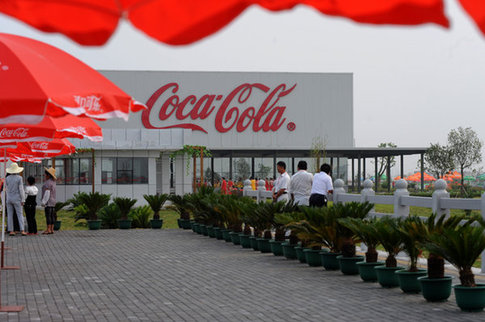Coke opened its 37th bottling plant in China in Jiangxi Province yesterday.
Costing 100 million yuan (US$14.3 million), the COFCO Coca-Cola Beverages (Jiangxi) Co will create 424 new jobs and an additional 4,000 jobs with local suppliers.

The plant has an annual capacity of almost 500 million bottles, and will serve 44 million people in the province. The annual per capita consumption of Coca-Cola products in Jiangxi is seven bottles. The China average is 28 bottles.
The 147,000-square-meter facility of China National Cereals, Oils & Foodstuffs Import & Export Corp Coca-Cola Beverage Ltd, a joint venture established in 2000 between COFCO and Coca-Cola, is in the Xiaolan Economic Development Zone of Nanchang. COFCO owns 65 percent and Coca-Cola has the balance.
"COFCO has had positive relations with Jiangxi. The favorable investment climate in Jiangxi has encouraged us to work with Coca-Cola in opening a new facility, which we expect to lead to more collaborative opportunities between COFCO and Jiangxi," COFCO Chairman Frank Ning said at the opening ceremony.
Jiangxi Province Governor Wu Xinxiong said the plant will boost the development of Jiangxi's local industry and help the Jiangxi economy take off.
"We have announced a new US$2 billion investment package from the end of 2008 through to 2011," said Muhtar Kent, chairman and CEO of Coca-Cola.
The investment will be in new plants, enlarging existing ones, distribution, logistics, sales and marketing, which will employ more than 30,000 people, said Kent.
He said he will open a similar plant in Urumqi in the northwestern Xinjiang Uygur Autonomous Region tomorrow. The building of a plant in Hohhot of the northern Inner Mongolia Autonomous Region, which will be completed in the next 18 months, is part of that US$2 billion package.
"And we will make many other investments," said Kent.
"Although the world economy will fall by about 3 percent in 2009, China will grow by 6 to 8 percent," he said.
The Jiangxi plant followed the government's call for greater investment and economic development in central and western areas, he said.
(Shanghai Daily June 24, 2009)